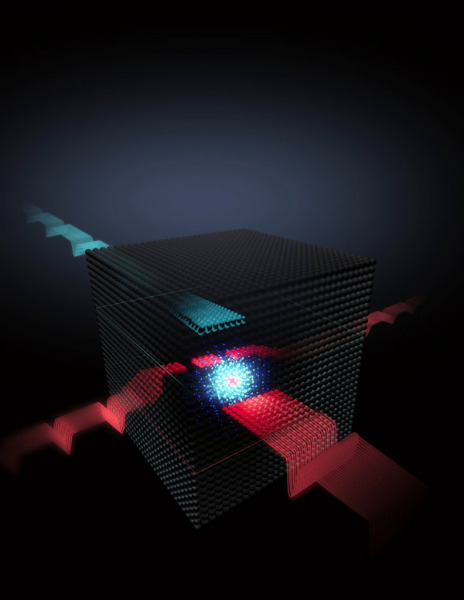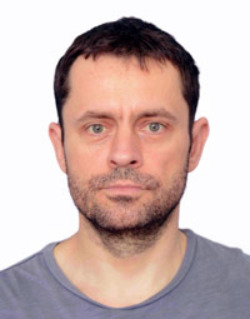Apr. 10, 2023 Research Highlight Physics / Astronomy
Modeling longer-lived holes in silicon quantum dots
The development of quantum computers will benefit from a new model of spin in tiny silicon dots
A theoretical model developed by three RIKEN physicists for optimizing semiconductor nanodevices will be helpful for scaling up quantum hardware1.
An electron trapped in a semiconductor device offers a promising building block for future quantum computers. Electrons have a property called spin, which, when measured, exists in one of two states—like the binary information, or bits, used in conventional computing. But due to its quantum nature, spin can exist in a superposition of the two states. These quantum bits, or qubits, lie at the heart of quantum information processing.
Electrons, or their positively charged counterparts known as holes, can be isolated in tiny semiconductor blobs called quantum dots.
But electron and hole spins only maintain their quantum state for a limited time. Disruption, or noise, from the spin’s environment can alter the spin state. “Once a quantum state is assigned to a qubit, it immediately starts to fade away,” explains Peter Stano from the RIKEN Center for Emergent Matter Science (CEMS).
This inevitable decay, or dephasing, is a fundamental limit and a major difference to classical information, which can be made permanent. Understanding dephasing is vital for developing methods to mitigate it, and thus aiding the design of large-scale quantum computers.

Figure 1: Illustration of a qubit in a silicon quantum dot. Optimizing the size, shape and geometry of a quantum dot leads to longer-lived hole spins. © TONY MELOV/SCIENCE PHOTO LIBRARY
Now, Stano, along with CEMS colleagues Ognjen Malkoc and Daniel Loss, has theoretically modeled a hole trapped in a silicon quantum dot. Using this model, they demonstrated that the length of time for which the hole spin maintains its quantum state depends on the quantum dot size and shape and the magnetic and electric fields applied to it.
The team identified robust configurations of quantum dots by going beyond the established theoretical model.
“Our results show that by carefully designing a quantum dot and by placing the electric and magnetic fields in certain ways we can find sweet spots at which the silicon hole-spin qubits are remarkably robust against electric noise,” says Stano.
This highlights one of the main advantages of spin qubits—they are largely immune to electric noise, which is the strongest type of noise present in every semiconductor device.
But dephasing is just one of the design considerations when optimizing quantum dots for quantum information processing. Speed and reliability of reading, writing and operating on the quantum information are also important.
“All these aspects will have similar sensitivity on the quantum dot design,” says Stano. “Our goal is to exploit the sensitivity also seen here and optimize the spin-qubit design.”

Peter Stano and two colleagues have developed a theoretical model for optimizing the design of silicon quantum-dot based spin qubits. © 2023 RIKEN
Related contents
- Researchers demonstrate error correction in a silicon qubit system
- Scientists achieve key elements for fault-tolerant quantum computation in silicon spin qubits
- Quantum entanglement of three spin qubits demonstrated in silicon
Rate this article
Reference
- 1. Malkoc, O., Stano, P. & Loss, D. Charge-noise-induced dephasing in silicon hole-spin qubits. Physical Review Letters 129, 247701 (2022). doi: 10.1103/PhysRevLett.129.247701
